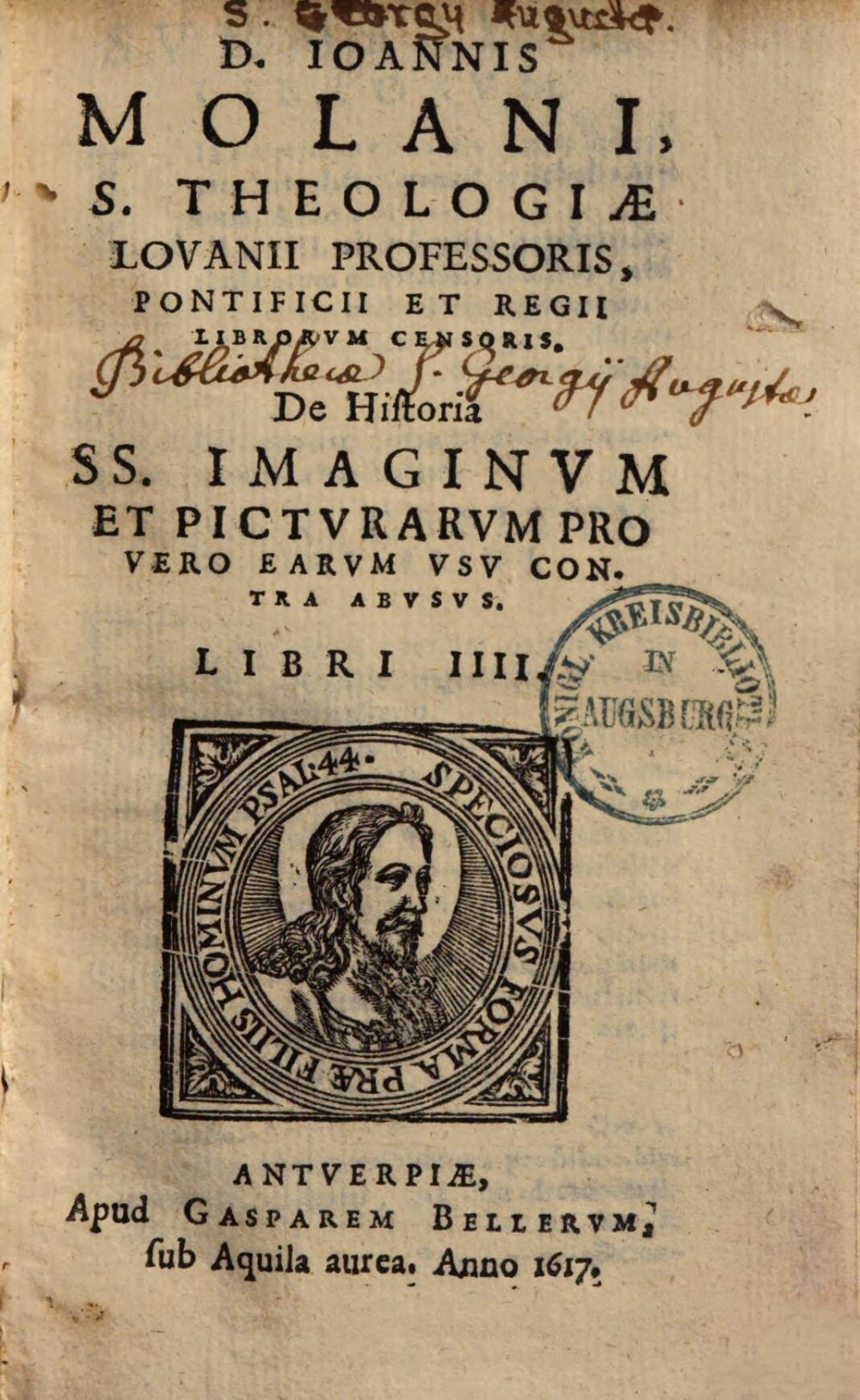
Augsburg, Staats- und Stadtbibliothek — Th H 1475. Digital Reproduction: München, Bayerische Staatsbibliothek, 2015.
In chapter 31 of book 2, Molanus examines a further matter regarding errors and whether they are dangerous errors and how to deal with them; this discussion starts in the preceding chapter. The central position in this chapter is taken by errors that are not real errors even though they do not correspond to the Scriptures or the teachings of the Church. The problem lays often in the fact that there is no certainty in the Scriptures about the matter nor a univocal position among the commentators. The cases presented by Molanus in this and the previous chapter are also often relatively popular depictions among the popular devotees, which requires an even more careful stance from the authorities. For Molanus in these cases, the most important aspect to consider is whether these errors still can be probable, because if so, he does not see a strong motive to adjust or abolish them.
The second case presented in chapter 31 centres around the way Christ is depicted while hanging from the Cross. Molanus argues that in recent paintings Christ is shown in all his strength while hanging from the Cross, instead of showing the languid typical of dying, which could be found in older paintings. Since languor is more characteristic of dying the newer images are considered improbable by Molanus but do not consist of an error.
“In ancient paintings, Christ hangs languidly on the Cross, since languid is characteristic of the dying. But in later pictures, he is painted in all his strength, with less probability, in the words of the psalmist: ‘They have counted all my bones.'”
“Christus in quibusdam antiquis picturis pendet in crucem languidus, languidi sunt enim morientes, in posterioribus tamen imaginibus non minori probabilitate expansus pingitur dicente psalmista, ‘Dinumeraverunt omnia ossa mea.'”
Molanus 1996, 213.



